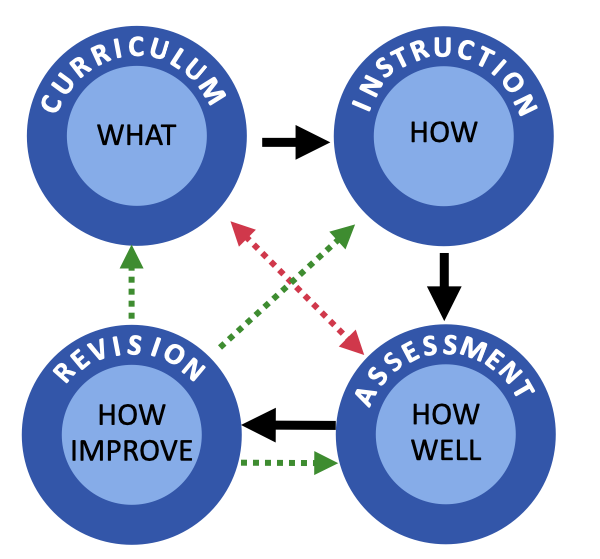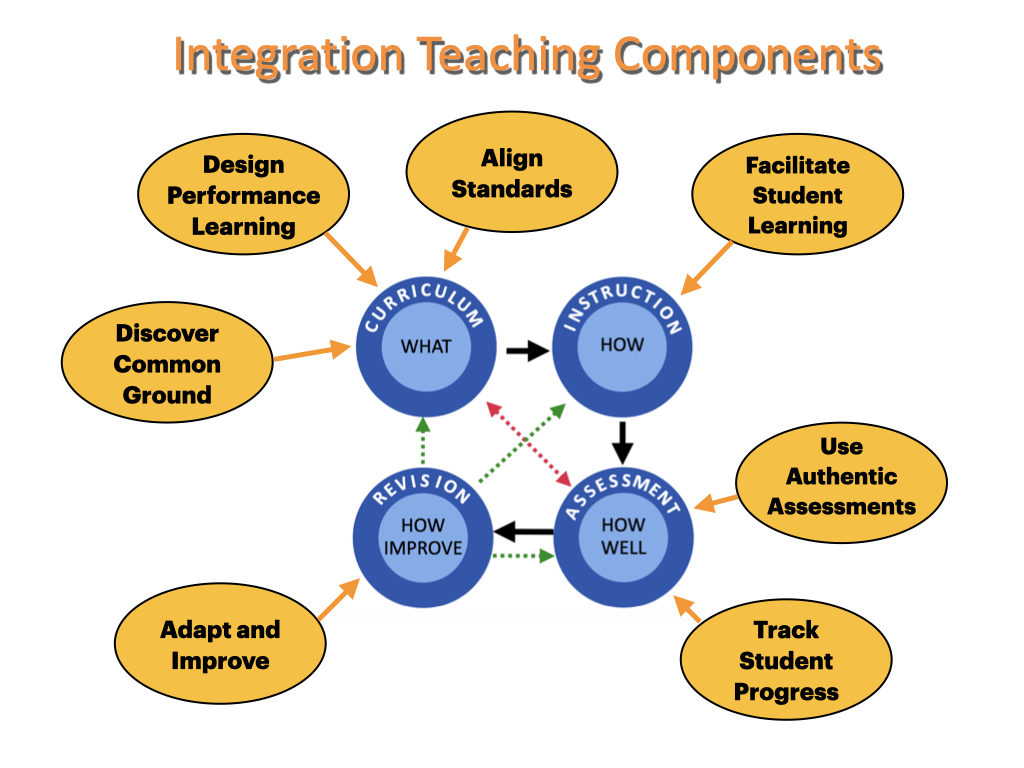My work in writing and editing the book Synergizing Success: Academic and Career Integration for CTE reinforced the importance of academic and CTE collaboration. This type of instructional integration creates more engaging student learning and better prepares the students for a changing technological world. This all sounds nice, but it feels like extra work for teachers. Further, where and when is there a time during school instruction for this “extra” integration? This blog describes the points where and when integration fits in teaching and can be inserted in small steps. This description will assist teachers in reflecting on and adapting their teaching and learning for student benefit. These steps are how to integrate academics and CTE.

An academic integration framework begins by clarifying the process of teaching, and a simple framework for teaching and learning for any subject is represented in the following model. Successful learning is a cycle of defining WHAT, HOW, HOW WELL, and HOW IMPROVE. These functions are defined as Curriculum, Instruction, Assessment, and Revision. This could be considered a cyclical process. However, it is more complex because the Curriculum should define Assessment and sometimes vice versa, as in the case of industry certifications. Also, the Revision modifies all three.

Integration Teaching Components
The potential individual integration tasks within teaching and learning can be defined in the following seven components.
- Discover Common Ground
- Identify potential student projects directly related to the skills and concepts overlapping both academic knowledge and technical skills.
- Design Performance Learning
- Define student performances that will provide evidence of acquiring technical skills and applying academic knowledge.
- Develop shared instructional principles that allow students to extend their content knowledge while strengthening critical thinking and technical skills.
- Align Standards
- Ensure that the instruction aligns with both academic standards and industry-specific technical standards. This can be achieved by mapping course objectives to relevant state and national standards.
- Facilitate Student Learning
- Utilize the Backward Design framework, which facilitates student activities and prepares students for academic assessments and real-world technical applications.
- Support students in acquiring any foundation knowledge and skills that will enable the completion of performance tasks.
- Encourage students to exercise sound reasoning and analytical thinking by engaging them in tasks that require judgment and explanation based on evidence.
- Design job tasks that involve identifying problems, analyzing data, and developing solutions, thereby fostering critical thinking in real-world contexts.
- Use Authentic Assessments
- Develop formative assessments that measure students’ progress towards these integrated outcomes.
- Develop summative assessments that demonstrate competency in expected technical skills and application of academic performance.
- Implement both formative assessments to monitor ongoing progress and summative assessments for accountability. These should be designed to evaluate both academic understanding and technical proficiency.
- Track Student Progress
- Establish systems for providing frequent and meaningful feedback to students, helping them understand their progress in both academic and technical domains.
- Develop tools for presenting acquired skills and levels of proficiency to employers and further education.
- Adapt and Improve
- Collect feedback from students, educators, and industry partners to refine the instructional framework continuously.
- Allow for adaptation of integrated instruction to meet students’ diverse needs and the workforce’s evolving demands.
Summary
The multiple components describe the small steps teachers can take to integrate academic and CTE integration over time. Generative AI is an additional tool for teachers to revise Curriculum, Instruction, Assessment, and Revision. I have been developing prompts to use in identified ways integrate and shared these on the NYS Trade and Technical Teachers Association website.
